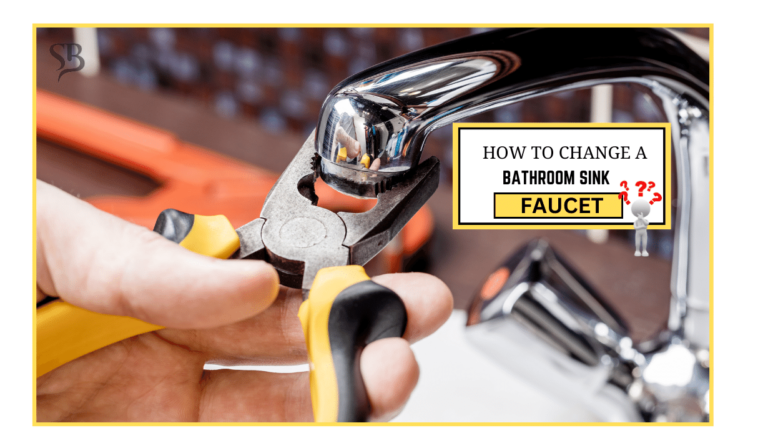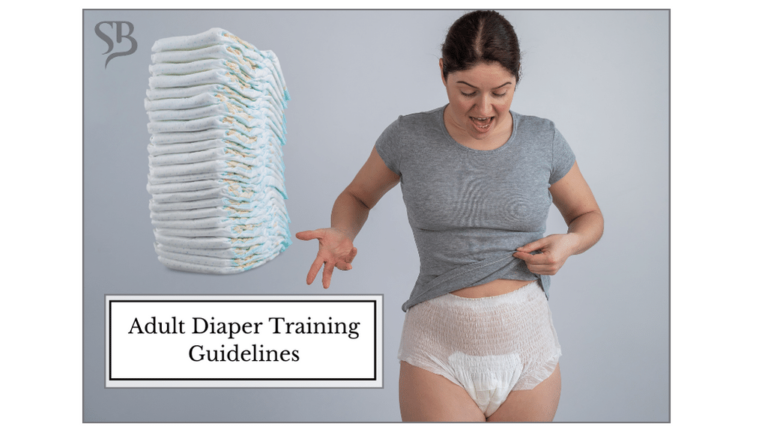CLR, which stands for Calcium, Lime, and Rust, is a popular cleaning product used to tackle tough stains and deposits in various household surfaces, including toilets.
It is highly effective in breaking down mineral deposits and grime, making it an excellent choice for toilet maintenance.
However, leaving CLR in toilet overnight can have both positive and negative consequences.
In this comprehensive article, we will explore in-depth the causes of such actions, their potential effects, and provide practical solutions to ensure the safe and efficient use of CLR in toilets.
Why Leave CLR in Toilet Overnight?
Here are some reasons people leave CLR in the toilet overnight:
Heavy Stains and Deposits
The primary reason individuals choose to leave CLR in their toilets overnight is to tackle stubborn stains and mineral deposits. Regular cleaning methods often prove ineffective against these tough buildups, prompting users to seek a more powerful and extended cleaning action.
Convenience
Leaving CLR in the toilet overnight offers a seemingly convenient approach to cleaning. By applying the cleaner before bedtime and flushing it away in the morning, users can save time and effort in their daily cleaning routine.
Lack of Awareness
In some cases, individuals may not be fully aware of the potential risks associated with leaving CLR in the toilet for an extended period. They might assume that the longer exposure will yield better results without understanding the adverse effects.

Also read: Push Button Toilet Flush Problems and How to Fix Them
Potential Effects of Leaving CLR in the Toilet Overnight
While leaving CLR in the toilet overnight can effectively tackle stains and deposits, it may lead to several undesirable consequences:
Damage to Toilet Components
One of the most significant risks of leaving CLR in the toilet overnight is the potential damage it can cause to the toilet’s internal components. CLR’s strong acidic properties can deteriorate rubber seals, gaskets, and plastic parts over time. This damage may lead to leaks, reduced flushing efficiency, and expensive repairs.
Health Risks
CLR contains harsh chemicals, and leaving it in the toilet overnight increases the chances of exposure to harmful fumes. Inhaling these fumes can cause respiratory irritation, coughing, and shortness of breath. Moreover, direct contact with the skin or eyes may result in irritation or burns.
Environmental Impact
Improper disposal of CLR residue can have adverse effects on the environment. If poured down the drain, CLR can enter the water supply and harm aquatic life and ecosystems. It is crucial to handle and dispose of CLR properly to minimize its environmental impact.
Risk of Accidents
Leaving CLR in the toilet overnight increases the likelihood of accidental ingestion or contact with the cleaning solution. This is particularly concerning in households with young children or pets who may be curious and unknowingly interact with the cleaner.
Reduced Cleaning Efficiency
Contrary to the assumption that leaving CLR overnight will enhance its cleaning power, it may result in diminished effectiveness. The solution may become diluted or evaporate during the prolonged exposure, reducing its ability to dissolve deposits effectively.
Also read: Bath Fitter Mold Issues: Understanding, Preventing, and Resolving the Problem
Safe and Efficient Use of CLR in Toilets
To maximize the benefits of using CLR and avoid potential risks, follow these practical and safe guidelines:
Read and Follow Instructions
Always read and strictly follow the manufacturer’s instructions on the CLR bottle. Pay particular attention to recommended application times, safety precautions, and proper disposal guidelines.
Wear Protective Gear
When handling CLR, use appropriate protective gear such as rubber gloves and safety goggles to prevent skin and eye irritation.
Test a Small Area First
Before applying CLR to the entire toilet, test it on a small, inconspicuous area to ensure compatibility and avoid potential damage to the toilet’s surface or components.
Also read: Toilet Bowl Cleaner Ruined Tile: What to Do
Use CLR Gel or Thickened Formulas
To prevent the cleaning solution from quickly running down the toilet bowl, consider using CLR gel or thickened formulas that adhere better to the surface, providing more contact time for effective cleaning.
Apply and Scrub
Apply CLR to the affected areas as per the instructions on the bottle. If necessary, use a toilet brush to gently scrub away the stains and deposits. Avoid using abrasive pads or brushes that may damage the toilet’s surface.
Avoid Overnight Application
Instead of leaving CLR in the toilet overnight, apply it during the day and allow it to sit for the recommended amount of time. Regularly check the progress of the cleaning process and reapply if needed.
Ventilate the Area
When using CLR, ensure the bathroom is well-ventilated to minimize exposure to fumes. Open windows and doors, and use exhaust fans if available, to promote air circulation and remove any lingering fumes.
Proper Disposal
After cleaning, dispose of any leftover CLR safely according to local guidelines. Do not pour it down the toilet or drain, as it can contaminate water sources. Look for environmentally-friendly disposal options or contact your local waste management facility for advice on proper disposal methods.

Also read: Is It Safe To Put Fabuloso In Toilet Tank?
Natural Alternatives to CLR
For those seeking eco-friendly and safer alternatives to CLR, consider using natural cleaning agents with similar effectiveness:
Vinegar and Baking Soda
Create a paste using equal parts of vinegar and baking soda to scrub away stains and deposits. The acidic properties of vinegar combined with the mild abrasive nature of baking soda make this mixture effective and safe for toilet cleaning.
Lemon Juice
The natural citric acid in lemon juice can help break down mineral deposits in the toilet bowl. Squeeze fresh lemon juice on the affected areas and allow it to sit for a few minutes before scrubbing with a brush.
Borax
Borax is a natural mineral that can be used to remove stains and kill bacteria in the toilet. Mix borax with water to create a paste, apply it to the stains, and let it sit for some time before scrubbing and flushing.
Essential Oils
Adding a few drops of essential oils such as tea tree, eucalyptus, or lavender to your natural cleaning solutions can provide additional disinfectant properties and leave a pleasant scent in the bathroom.
Commercial Eco-Friendly Cleaners
Look for commercial cleaners labeled as eco-friendly and biodegradable. These products are formulated to be less harmful to the environment and may have milder effects on toilet components while still providing effective cleaning.

Also read: Dealing with a Toilet Brush Head Stuck in the Toilet
Additional Tips for Toilet Maintenance
To maintain a clean and hygienic toilet, consider adopting the following habits:
Regular Cleaning Schedule
Establish a regular cleaning schedule to prevent heavy stains and deposits from building up in the first place. Frequent cleaning will make the task more manageable and reduce the need for aggressive cleaning agents like CLR.
Use Toilet Bowl Fresheners
Consider using toilet bowl fresheners or in-tank cleaners that release small amounts of cleaning agents with each flush. These products can help keep the toilet bowl fresh and minimize the need for intense cleaning sessions.
Practice Proper Flushing Habits
Encourage household members to flush the toilet regularly and responsibly, avoiding the disposal of non-flushable items that could lead to clogs and buildup.
Regular Inspections
Periodically inspect the toilet’s components for signs of wear or damage, such as leaks or corrosion. Promptly address any issues to prevent further damage and costly repairs.
Also read: How Many Toilets Can You Place On A 3-Inch Drain?
Conclusion
While leaving CLR in the toilet overnight may initially seem like an efficient solution to stubborn stains and deposits, it comes with significant potential risks to both your health and the environment. Instead, following safe and practical guidelines for the use of CLR or opting for eco-friendly alternatives will help you maintain a clean and hygienic toilet without compromising on safety.
Always prioritize your health, the well-being of your household, and the environment when choosing cleaning products and methods. By adopting responsible cleaning practices, you can enjoy a sparkling and well-maintained toilet without resorting to overnight solutions that may cause more harm than good.
Also read: Effective Tips for Removing Urine Stains from Grout Around Toilets
Are there safer alternatives to using CLR for toilet cleaning?
Yes, natural alternatives such as vinegar and baking soda, lemon juice, borax, essential oils, and commercial eco-friendly cleaners are safer options for toilet cleaning. These alternatives effectively tackle stains and deposits without posing the same risks to health and the environment as some harsh chemical cleaners like CLR.
Can leaving CLR in the toilet overnight damage the toilet components?
Yes, leaving CLR (Calcium, Lime, and Rust) in the toilet overnight can potentially damage internal components such as rubber seals, gaskets, and plastic parts due to CLR’s strong acidic properties. This damage may lead to leaks, reduced flushing efficiency, and costly repairs.







